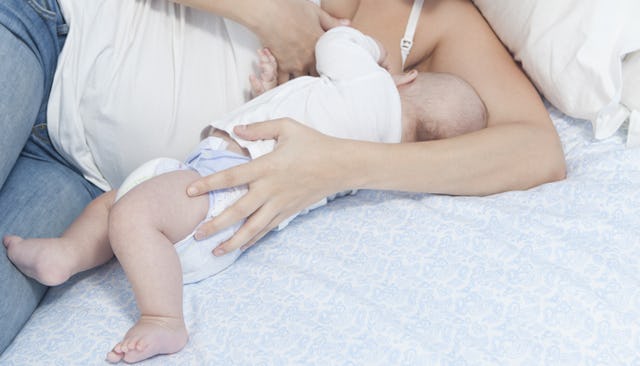Your Boobs Eat Themselves After You Are Done Nursing. Yes, I'm Serious.

The female body is astounding in so many ways. It never ceases to amaze me what women are able to endure. From growing and birthing a human to providing that child with nourishment only seconds after they enter this world, all of it is extraordinary.
For most of us, our breasts are able to turn into milk machines until we are done nursing, and then go back to regular ol’ (albeit often different in appearance) breasts in a few days. And then, they are ready to do it all over again when we decide to birth another child. Our body seems to know what to do, which is good — one less thing moms have to worry about.
And while many of us complain about our sagging breasts after nursing, there is a something pretty amazing happening on the cellular level when our children are weaned. When we stop nursing, our breasts adjust accordingly, and they do so quickly. They recognize we are no longer using the milk they are producing, so they simply stop. The reason for this, according to New Scientist, is a “molecular switch […] that controls their transformation from milk secretors to cellular eaters that gobble up their dying neighbors.”
That’s right — they actually “eat” the dead cells that are left when we are done lactating, which is why they shrink back to their normal size. But that’s not the only discovery: There is new information which could bring insights to breast cancer.
While pregnant, our cells form alveoli. These are ball-like structures where milk is made, but as soon as we are done nursing, the alveoli eat themselves — which makes complete sense. After all, it takes so much for the human body to make milk, and all that “stuff” has to go somewhere. This self-destruction would typically cause inflammation and pain, but the rule doesn’t apply when it comes to our boobs (thank goodness). But why?
According to a team lead by Nasreen Akhtar at the University of Sheffield, a protein called Rac1, which is responsible for milk production, is the reason our bodies are able to clear out the dead cells so quickly without any side effects.
A study was done in female mice which helped prove this theory. Pregnant mice, with their Rac1 gene removed, had a litter of pups. While these pups did survive, they were much smaller than normal. Then the mice went on to have more litters — none of which survived. It was found that because Rac1 was removed, dead cells invaded the breasts making it so the mice weren’t able to produce healthy breast tissue or milk in later pregnancies.
While there is more work to be done, there is great hope that Rac1 can be used to fight breast cancer since we now know it removes dead cells that would otherwise cause pain, discomfort, and swelling, as well as harm our chances of future breastfeeding. This information can hopefully give us more answers about the progression of breast cancer.
Matthew Naylor, a cancer biologist at the University of Sydney in Australia explains Rac1 definitely has “a potential role” in breast cancer that we can explore further.
Women’s bodies (and their breasts) are amazing. They know what to do and when to do it. I had no idea how much work our lovely boobies actually did. And it would be really fantastic to find a cure for breast cancer because of something women’s bodies do naturally.